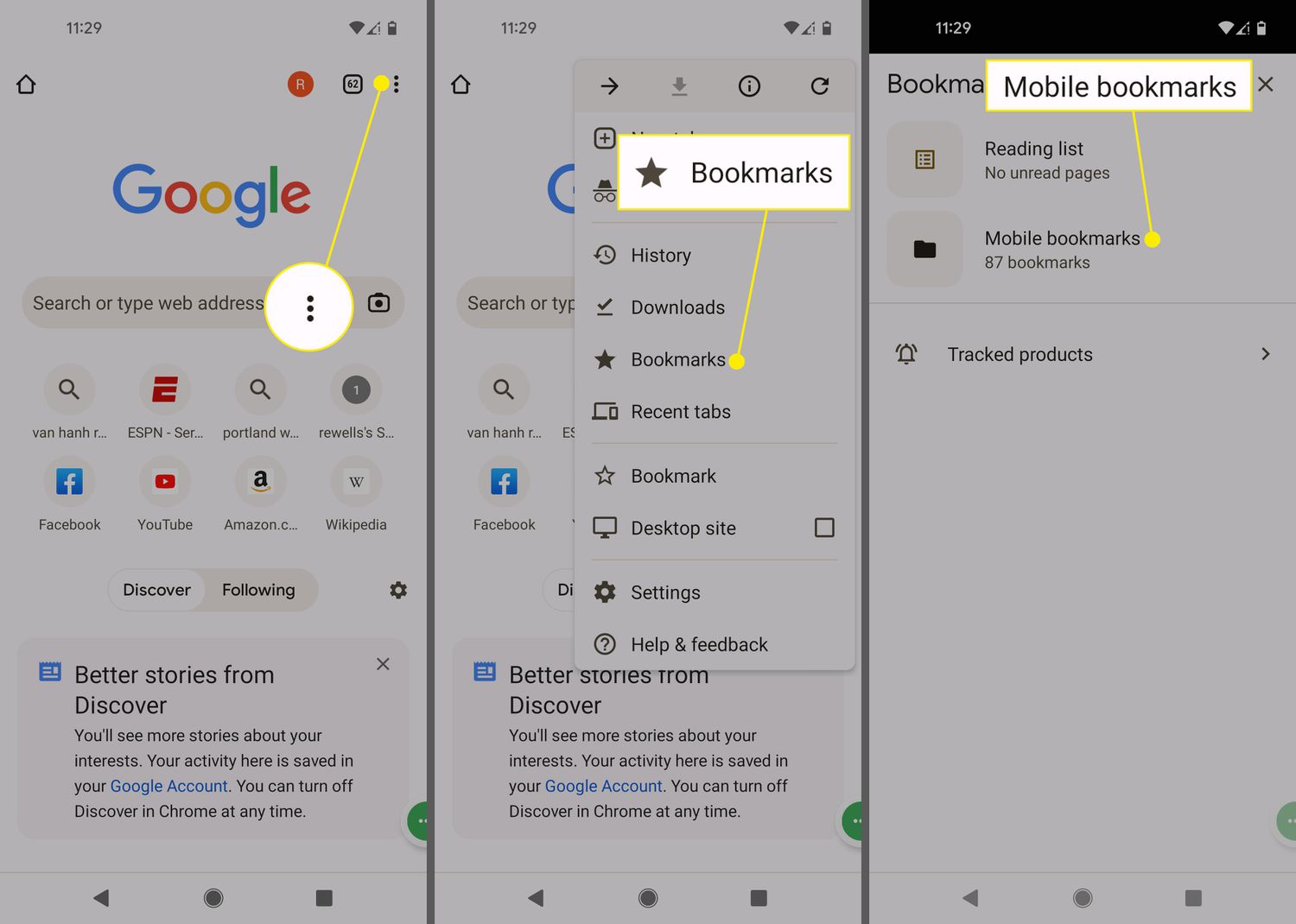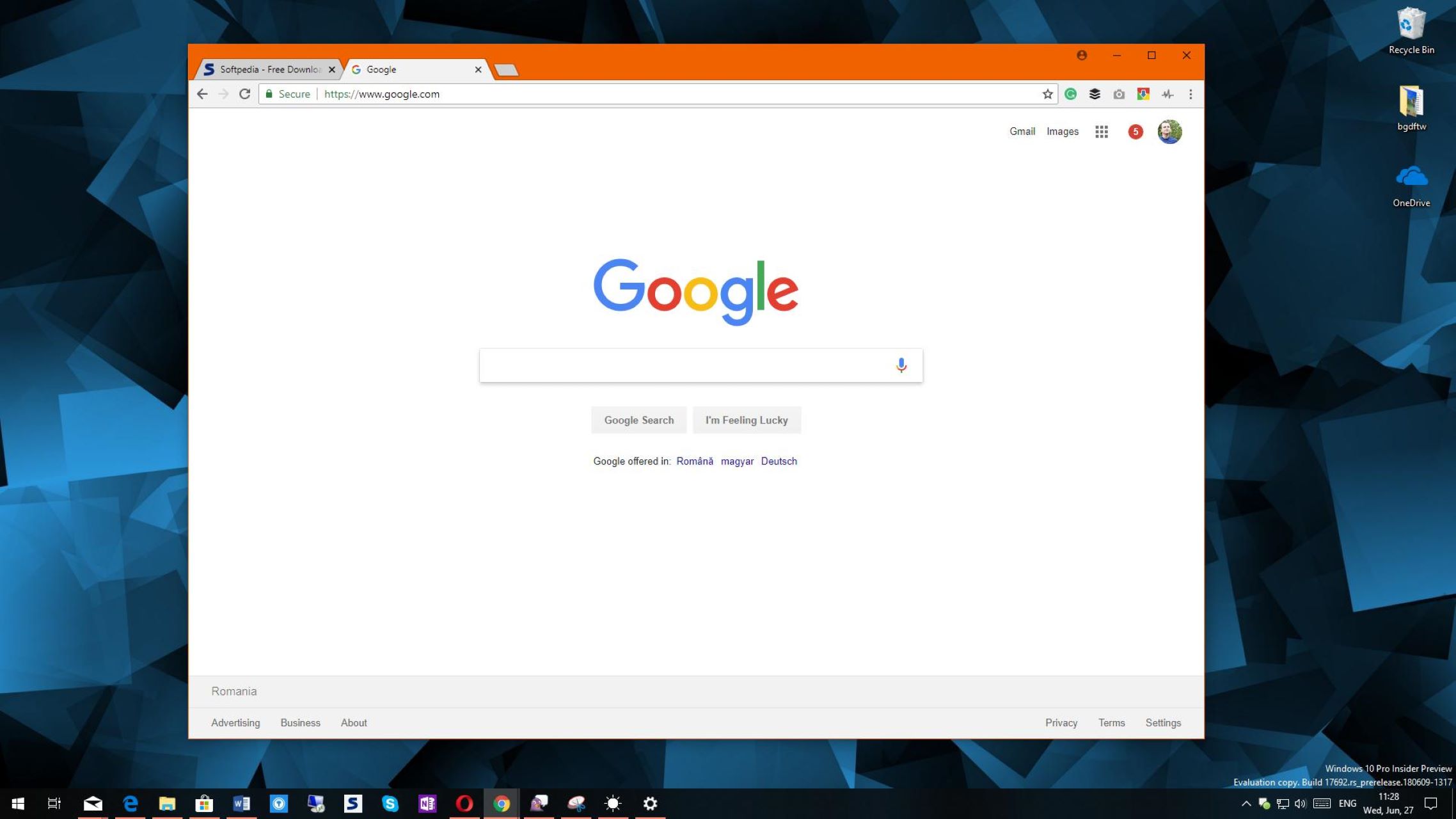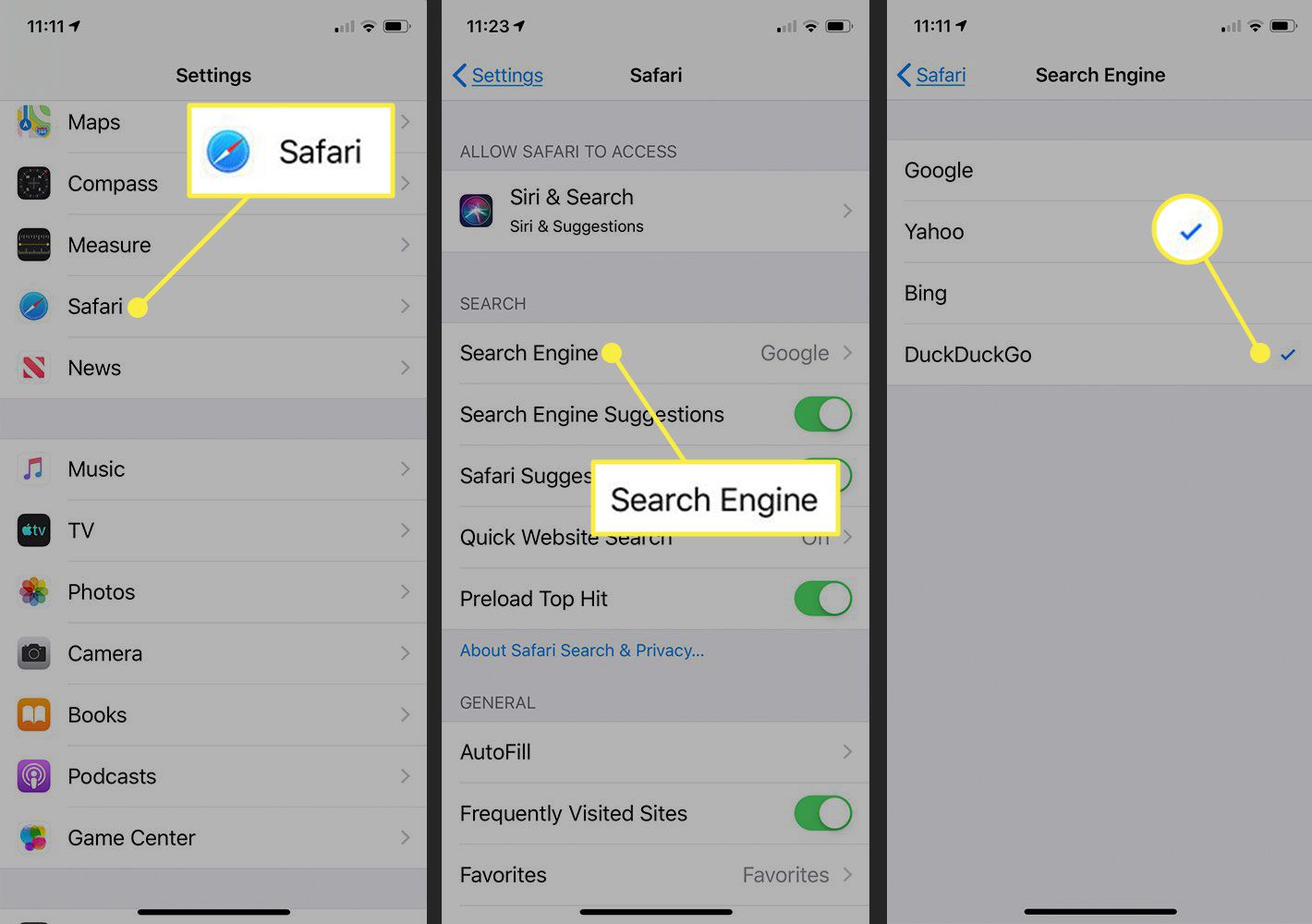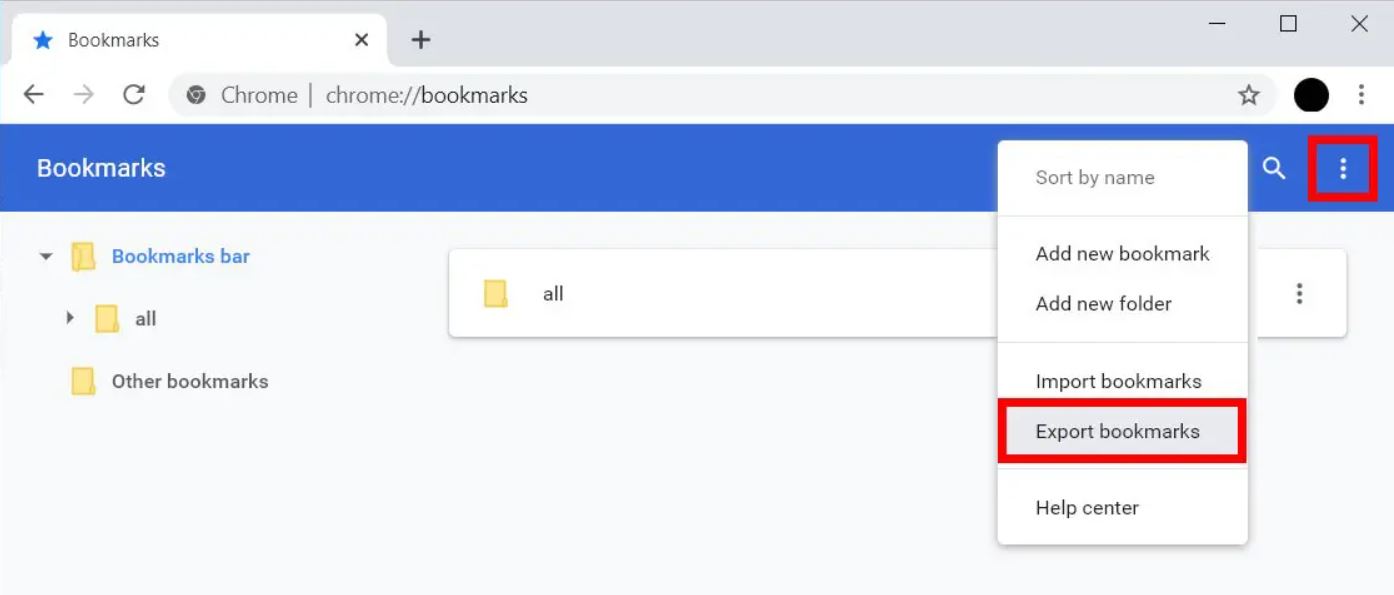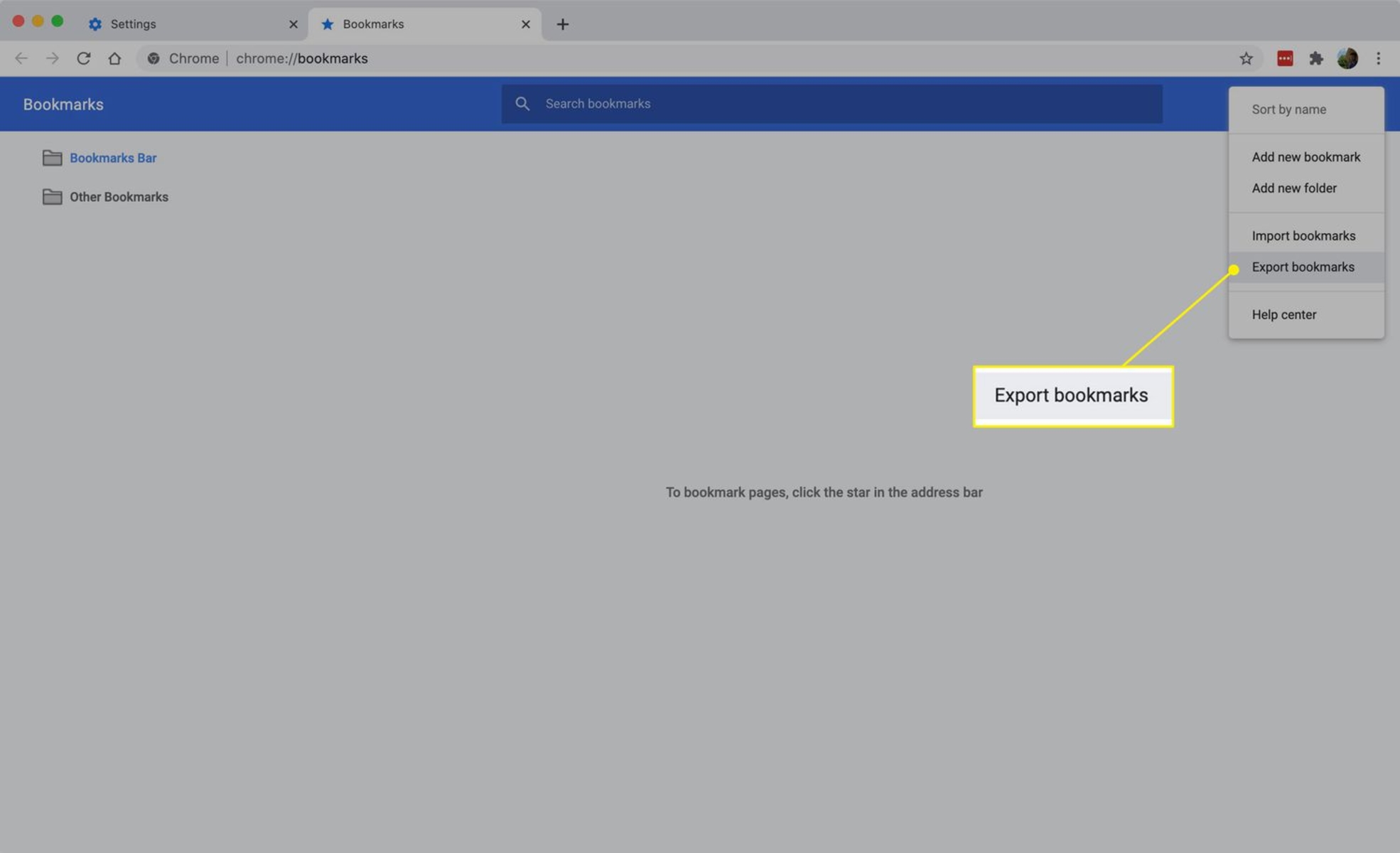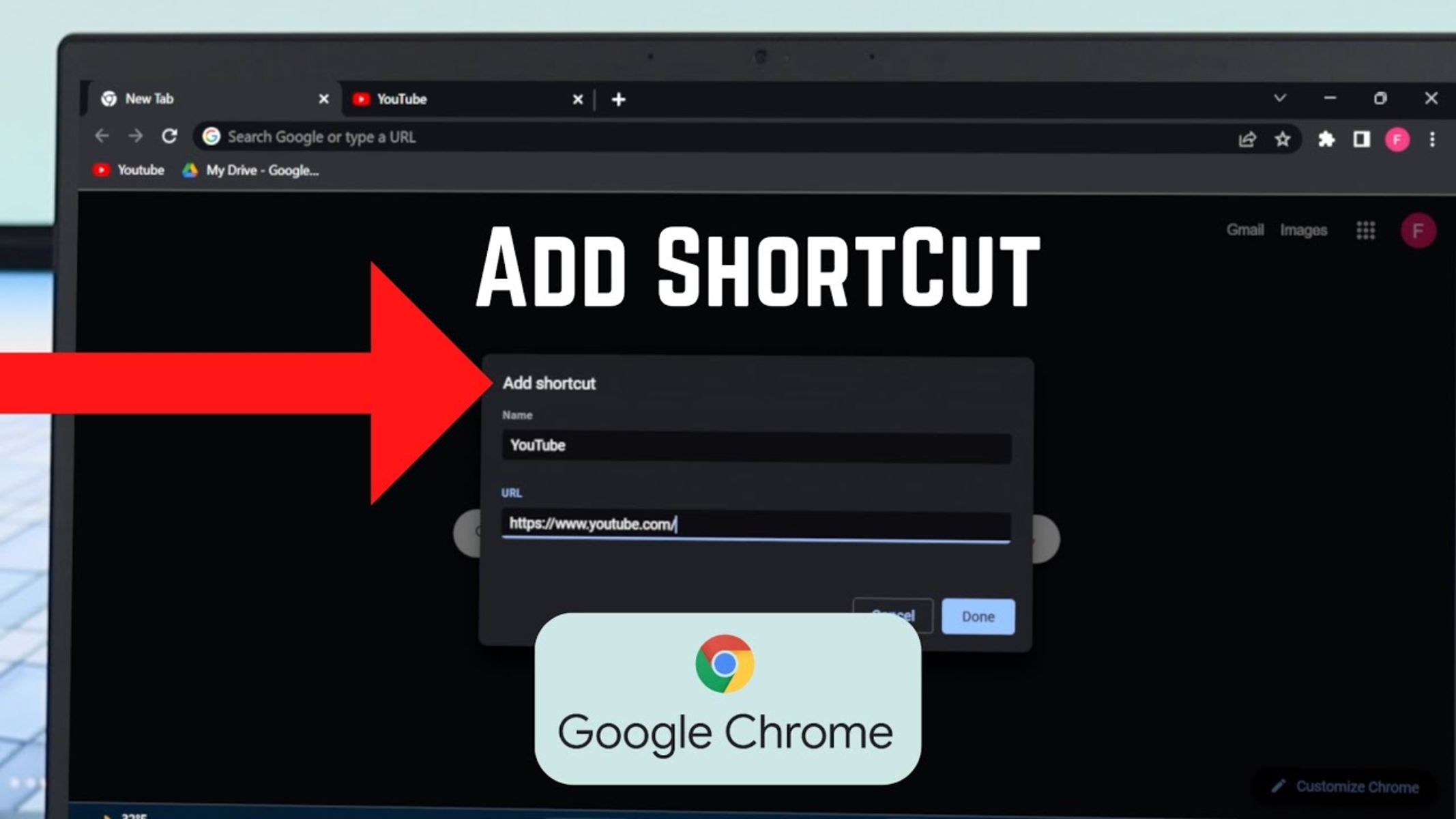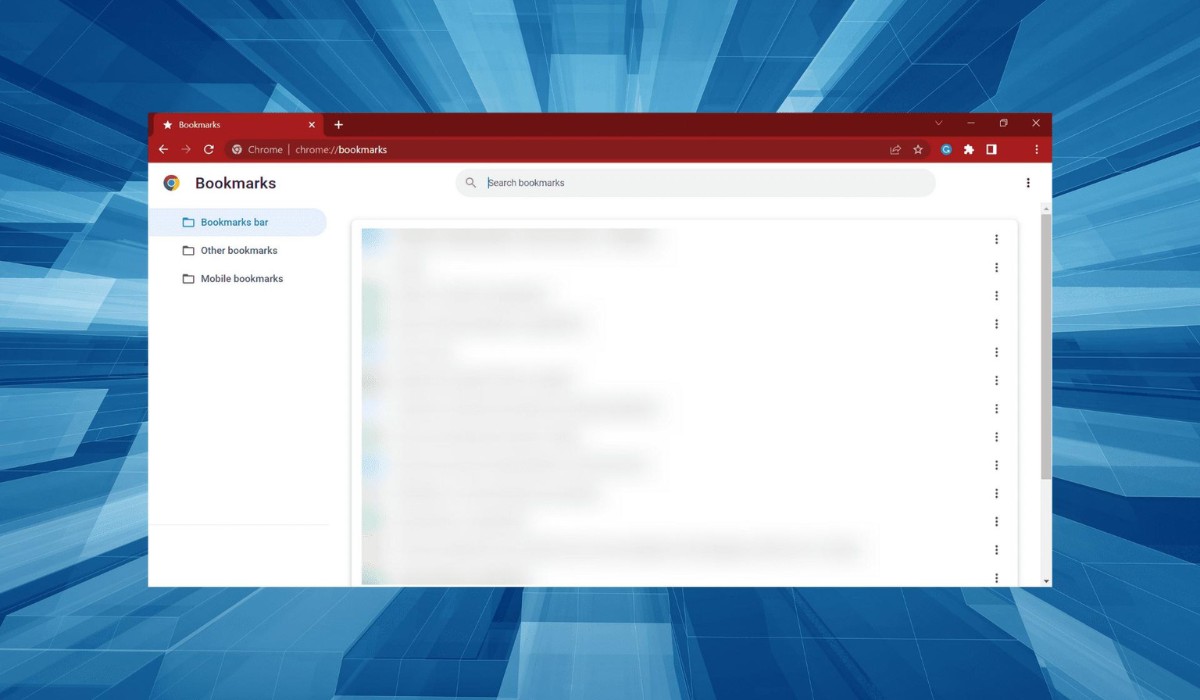Introduction
Google Chrome, one of the most popular web browsers worldwide, offers a seamless browsing experience with a plethora of features, including the ability to save and organize bookmarks. Bookmarks are a convenient way to keep track of your favorite websites, important resources, and frequently visited pages. Whether you're an avid reader, a research enthusiast, or a professional navigating the web, knowing where your bookmarks are stored and how to manage them efficiently can significantly enhance your browsing experience.
In this article, we will delve into the intricacies of bookmark management in Google Chrome. From understanding the default location where bookmarks are stored to exploring the option of customizing their storage location, we will cover everything you need to know about managing your bookmarks effectively. Additionally, we will shed light on the process of syncing bookmarks across devices, as well as the methods for exporting and importing bookmarks, empowering you to seamlessly access your saved web pages across different platforms.
So, whether you're looking to streamline your browsing experience, ensure the safety of your bookmarks, or simply gain a deeper understanding of Chrome's bookmark management capabilities, this article will serve as your comprehensive guide to mastering the art of bookmark organization in Google Chrome. Let's embark on this journey to unravel the mysteries of bookmark storage and management within the realms of Google Chrome.
Default Location for Bookmarks
When you save a webpage as a bookmark in Google Chrome, the browser stores it in a default location within its system files. This default location ensures that your bookmarks are securely stored and easily accessible whenever you need them. Understanding where these bookmarks are stored can provide valuable insights into how Chrome manages this essential feature.
By default, Google Chrome stores bookmarks in a dedicated folder within the user's profile directory. The specific path to this location varies depending on the operating system:
-
Windows: On Windows operating systems, the default location for bookmarks is within the user's profile folder. The path typically follows this structure:
C:\Users\YourUsername\AppData\Local\Google\Chrome\User Data\Default\Bookmarks. -
Mac: For Mac users, the default location for bookmarks is within the user's Library folder. The path is similar to:
/Users/YourUsername/Library/Application Support/Google/Chrome/Default/Bookmarks. -
Linux: On Linux systems, the default location for bookmarks is within the user's home directory. The path may resemble:
/home/YourUsername/.config/google-chrome/Default/Bookmarks.
It's important to note that the specific folder names and file paths may vary slightly based on the Chrome version and the user's customizations. However, the general structure remains consistent across different installations.
Within the designated folder, Chrome stores bookmarks in a file named "Bookmarks." This file contains a structured hierarchy of the saved bookmarks, including their URLs, titles, and other relevant metadata. By accessing this file, users can directly manipulate their bookmarks, create backups, or even transfer them to another device or browser.
Understanding the default location for bookmarks in Google Chrome empowers users to take control of their bookmark management. Whether you're looking to back up your bookmarks, troubleshoot issues related to bookmark synchronization, or simply gain a deeper understanding of Chrome's internal workings, knowing where your bookmarks are stored is a crucial piece of knowledge for every Chrome user.
Custom Location for Bookmarks
While Google Chrome's default location for storing bookmarks provides a secure and standardized approach, some users may prefer to customize the storage location for various reasons. Fortunately, Chrome offers the flexibility to set a custom location for storing bookmarks, allowing users to tailor their browsing experience to their specific preferences.
Customizing the location for storing bookmarks can be particularly advantageous for users who seek to streamline their data management, enhance backup strategies, or integrate their bookmark storage with cloud services. By choosing a custom location, users can exert greater control over their bookmark organization and ensure seamless access to their saved web pages across different devices and platforms.
To set a custom location for storing bookmarks in Google Chrome, users can leverage the browser's built-in functionality to modify the location of the bookmarks file. This process involves creating a symbolic link that redirects Chrome's default bookmark storage to a user-defined location. By creating this symbolic link, users can effectively establish a custom location for storing their bookmarks without altering the browser's core functionality.
The process of setting a custom location for bookmarks involves the following steps:
-
Identify the desired location for storing bookmarks, whether it's a specific folder within the user's profile directory or an external storage location such as a cloud-synced folder.
-
Create a symbolic link that points to the desired storage location. This can be achieved using command-line tools or third-party software designed for creating symbolic links.
-
Redirect Chrome's default bookmark storage to the custom location by replacing the original "Bookmarks" file with the symbolic link. This effectively establishes the custom location for storing bookmarks within Chrome's ecosystem.
By setting a custom location for storing bookmarks, users can align their browsing habits with their preferred data management practices. Whether it's integrating bookmark storage with cloud services for seamless synchronization or consolidating bookmark data within a specific folder structure, customizing the bookmark storage location empowers users to personalize their browsing experience according to their unique needs and preferences.
In essence, the ability to set a custom location for storing bookmarks in Google Chrome exemplifies the browser's commitment to providing users with flexibility and customization options. By leveraging this feature, users can optimize their bookmark management strategies and tailor their browsing environment to align with their individual workflows and data management practices.
Synced Bookmarks
In today's interconnected digital landscape, seamless access to personal data across multiple devices has become a fundamental requirement for many users. Google Chrome addresses this need through its bookmark synchronization feature, which enables users to effortlessly access their saved bookmarks on various devices, ensuring a consistent browsing experience regardless of the platform being used.
When users opt to sync their bookmarks in Google Chrome, the browser leverages their Google account to securely store and synchronize the bookmark data across devices. This means that any bookmark saved on one device, whether it's a desktop computer, laptop, smartphone, or tablet, becomes instantly accessible on all other devices linked to the same Google account.
The process of syncing bookmarks in Google Chrome is straightforward and seamless. Users can enable bookmark synchronization by signing in to their Google account within the Chrome browser settings. Once signed in, Chrome automatically syncs the bookmarks, ensuring that any changes or additions made to the bookmark collection on one device are promptly reflected across all synced devices.
The synchronization of bookmarks in Google Chrome extends beyond the basic storage of URLs and page titles. It also encompasses the preservation of folder structures, custom bookmark arrangements, and any metadata associated with the saved web pages. This comprehensive synchronization ensures that users' bookmark collections remain consistent and organized across all their devices, regardless of the platform or form factor.
Furthermore, Google Chrome's bookmark synchronization feature prioritizes data security and privacy. The synchronization process employs robust encryption protocols to safeguard users' bookmark data, ensuring that sensitive information remains protected throughout the synchronization journey. This commitment to data security underscores Chrome's dedication to providing a secure and reliable bookmark synchronization experience for its users.
By seamlessly syncing bookmarks across devices, Google Chrome empowers users to maintain a unified browsing environment, allowing them to seamlessly transition between devices without losing access to their saved web pages. Whether it's accessing a research article on a smartphone while on the go or revisiting a favorite website on a laptop, the synced bookmarks feature ensures that users' bookmark collections are readily available whenever and wherever they need them.
In essence, Google Chrome's bookmark synchronization feature epitomizes the browser's commitment to delivering a cohesive and user-centric browsing experience. By enabling users to effortlessly access their saved bookmarks across devices, Chrome enhances the continuity and convenience of the browsing journey, ultimately empowering users to navigate the web with unparalleled ease and efficiency.
Exporting Bookmarks
Exporting bookmarks from Google Chrome is a valuable capability that empowers users to create backups of their bookmark collections, transfer their bookmarks to another browser or device, or simply maintain a local archive of their saved web pages. This process ensures that users have full control over their bookmark data, allowing them to safeguard their valuable web page references and seamlessly integrate them into their preferred browsing environments.
In Google Chrome, exporting bookmarks is a straightforward process that can be accomplished through the browser's settings. By following a few simple steps, users can export their entire bookmark collection or select specific bookmarks for export, providing flexibility and customization options to suit their individual needs.
To initiate the process of exporting bookmarks from Google Chrome, users can follow these steps:
-
Open Google Chrome and access the browser's settings by clicking on the three-dot menu icon located in the top-right corner of the window.
-
Within the settings menu, navigate to the "Bookmarks" or "Favorites" section, depending on the specific terminology used by the browser.
-
Locate the option for managing bookmarks, which may be represented by an icon resembling a star or a series of organized bookmarks.
-
Within the bookmark management interface, look for the option to export bookmarks. This may be accessible through a dedicated menu, a right-click context menu, or a specific button within the interface.
-
Upon selecting the export bookmarks option, Chrome will prompt the user to choose a destination for the exported bookmarks file. Users can specify a location on their local storage, an external drive, or any preferred directory for saving the exported bookmarks file.
-
After choosing the destination, Chrome will generate a file containing the exported bookmarks, typically in HTML format. This file encapsulates the entire bookmark collection, including URLs, page titles, and folder structures, ensuring a comprehensive representation of the user's bookmark data.
By exporting bookmarks from Google Chrome, users can create versatile backups of their bookmark collections, enabling them to restore their bookmarks in the event of data loss or seamlessly transfer them to alternative browsers or devices. This process empowers users to maintain control over their valuable web page references, ensuring that their browsing experience remains consistent and personalized across different platforms and environments.
In essence, the ability to export bookmarks from Google Chrome exemplifies the browser's commitment to providing users with robust data management capabilities, ultimately empowering them to safeguard and leverage their bookmark collections according to their unique preferences and requirements.
Importing Bookmarks
Importing bookmarks into Google Chrome is a seamless process that allows users to integrate their bookmark collections from external sources, alternative browsers, or backup files into the Chrome ecosystem. This capability enables users to consolidate their web page references, ensuring that their browsing experience remains cohesive and personalized across different platforms and devices.
To initiate the process of importing bookmarks into Google Chrome, users can follow these straightforward steps:
-
Open Google Chrome and access the browser's settings by clicking on the three-dot menu icon located in the top-right corner of the window.
-
Within the settings menu, navigate to the "Bookmarks" or "Favorites" section, depending on the specific terminology used by the browser.
-
Locate the option for managing bookmarks, which may be represented by an icon resembling a star or a series of organized bookmarks.
-
Within the bookmark management interface, look for the option to import bookmarks. This may be accessible through a dedicated menu, a right-click context menu, or a specific button within the interface.
-
Upon selecting the import bookmarks option, Chrome will prompt the user to choose the source of the bookmarks to be imported. Users can select from a variety of sources, including HTML files, bookmarks exported from other browsers, or backup files from previous Chrome installations.
-
After choosing the source, Chrome will process the imported bookmarks, integrating them into the user's existing bookmark collection. This ensures that the imported bookmarks seamlessly become part of the user's browsing environment, complete with their original URLs, page titles, and folder structures.
By importing bookmarks into Google Chrome, users can effortlessly merge their web page references from diverse sources, ensuring that their bookmark collections remain comprehensive and easily accessible within the Chrome browser. Whether it's migrating from an alternative browser, restoring bookmarks from a backup file, or consolidating bookmark data from multiple devices, the import functionality empowers users to maintain a unified and organized browsing experience.
In essence, the ability to import bookmarks into Google Chrome exemplifies the browser's commitment to providing users with flexible data management options, ultimately enabling them to seamlessly integrate their web page references into their preferred browsing environment according to their unique needs and preferences.









